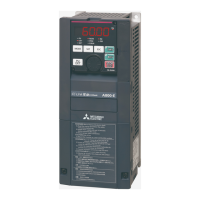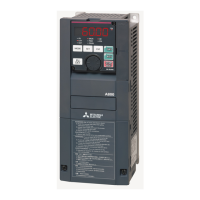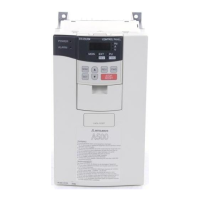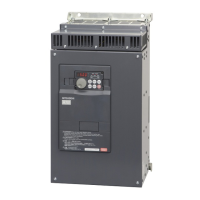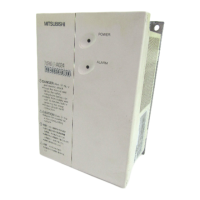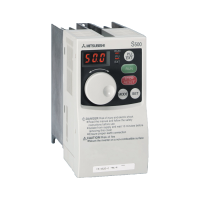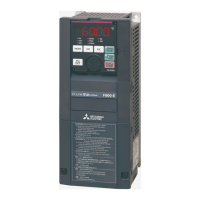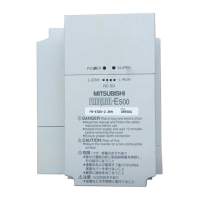Installation of the inverter and enclosure design
28
INSTALLATION AND WIRING
Vibration, impact
The vibration resistance of the inverter is up to 5.9 m/s
2
(2.9 m/s
2
or less for the FR-A840-04320(160K) or higher) at 10 to 55
Hz frequency and 1 mm amplitude for the directions of X, Y, Z axes. Applying vibration and impacts for a long time may loosen
the structures and cause poor contacts of connectors, even if those vibration and impacts are within the specified values.
Especially when impacts are applied repeatedly, caution must be taken because such impacts may break the installation feet.
Countermeasure
• Provide the enclosure with rubber vibration isolators.
• Strengthen the structure to prevent the enclosure from resonance.
• Install the enclosure away from the sources of the vibration.
2.3.2 Cooling system types for inverter enclosure
From the enclosure that contains the inverter, the heat of the inverter and other equipment (transformers, lamps, resistors,
etc.) and the incoming heat such as direct sunlight must be dissipated to keep the in-enclosure temperature lower than the
permissible temperatures of the in-enclosure equipment including the inverter.
The cooling systems are classified as follows in terms of the cooling calculation method.
(a) Cooling by natural heat dissipation from the enclosure surface (totally enclosed type)
(b) Cooling by heatsink (aluminum fin, etc.)
(c) Cooling by ventilation (forced ventilation type, pipe ventilation type)
(d) Cooling by heat exchanger or cooler (heat pipe, cooler, etc.)
Cooling system Enclosure structure Comment
Natural
cooling
Natural ventilation
(enclosed, open type)
This system is low in cost and generally used, but the
enclosure size increases as the inverter capacity increases.
This system is for relatively small capacities.
Natural ventilation (totally
enclosed type)
Being a totally enclosed type, this system is the most
appropriate for hostile environment having dust, dirt, oil mist,
etc. The enclosure size increases depending on the inverter
capacity.
Forced
cooling
Heatsink cooling
This system has restrictions on the heatsink mounting position
and area. This system is for relatively small capacities.
Forced ventilation
This system is for general indoor installation. This is
appropriate for enclosure downsizing and cost reduction, and
often used.
Heat pipe This is a totally enclosed for enclosure downsizing.
INV
INV
INV
Heatsink
INV
INV
Heat
pipe
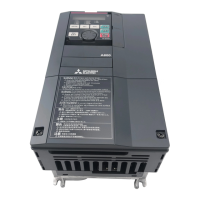
